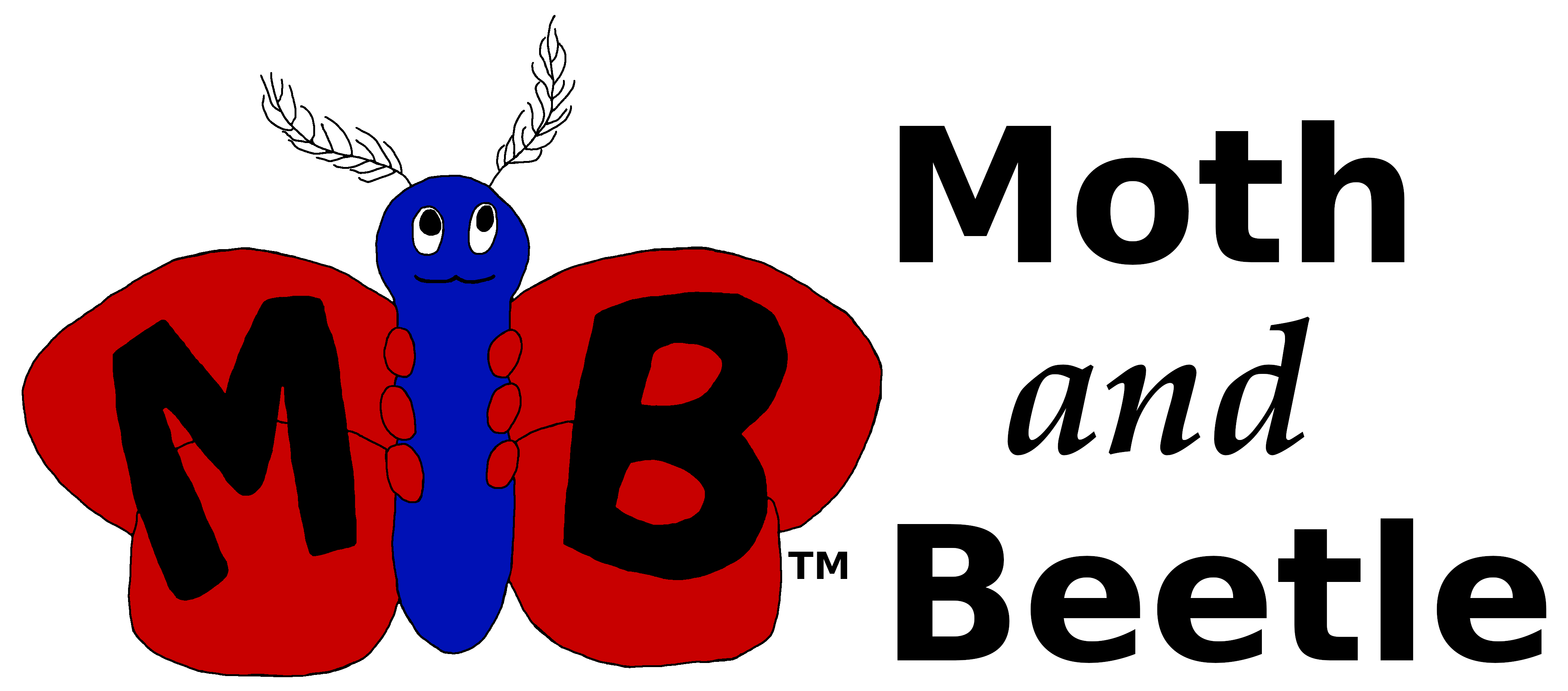Everything You Need to Know About Insect Pins!
Pinning is the most common way of preserving insects. Preserved insects are dry and very brittle, making handling them difficult. The insect pin is used kind of like a handle to manipulate the specimen, and keeps the insect from knocking other specimens around in storage.
Not all arthropods can be kept on pins. Most larvae and non-insects, also any soft-bodied insects, need to be stored in vials containing alcohol.
While insect pins may look like sewing pins, they are not. Insect pins:
- Don't corrode and ruin the specimen
- Are generally longer than sewing pins, giving more room to fit the specimen and labels and still leave space to handle the pin
- Are sharper, which makes penetrating the hard exoskeleton easier.
There are many sizes and varieties of insect pins. Here's what you need to know.
Material
Insect pins come in two materials: black enameled steel or stainless steel. Black enamel, sometimes called simply "black pins", is the most commonly-used finish, and provides good anti-corrosive properties under ordinary conditions.
What’s ordinary? If you need to ask, you might want to consider a stainless steel pin!
Stainless steel is better for humid environments; this is a higher quality pin (which also means these are more expensive pins – no surprise!). Interestingly, stainless steel pins are sometimes called "white pins" to differentiate from black enamel pins. Not actually white. Go figure.
Head Colour
Insect pins have different coloured heads, with the heads being made of nylon (plastic). Choice of a particular colour of pin head can be based on individual preference, but also on the specimen being pinned, and the manner of displaying the specimen.
a) Gold-Headed Pins
Gold-headed pins are the most common type of pins. The heads are visible but not "in your face" visible. These are excellent pins for a wide variety of specimens.
b) Black-Headed Pins
Some people prefer the appearance of pins which have black heads. Especially for specimens that are primarily dark/black as the pins are less obvious than the gold-headed pins under these conditions.
Black-headed pins are unique to Austerlitz.
c) Clear-Headed "Photo" Pins
Photo pins have clear plastic heads. The clear heads are less visible in pictures, hence the name.
These pins are unique to Entochrysis and no longer available; they will only be available while supplies last.
Pin Sizes
Insect pins come in different sizes to fit different insects. Size 000 is the smallest, 7 is the largest.
Please note that pins in sizes 000 to 6 are all the same length (allowing for slight manufacturing variation).
- Size 000, length 39mm, diameter 0.25mm
- Size 00, length 39mm, diameter 0.30mm
- Size 0, length 39mm, diameter 0.35mm
- Size 1, length 39mm, diameter 0.40mm
- Size 2, length 39mm, diameter 0.45mm
- Size 3, length 39mm, diameter 0.50mm
- Size 4, length 39mm, diameter 0.55mm
- Size 5, length 39mm, diameter 0.60mm
- Size 6, length 39mm, diameter 0.65mm
- Size 6A, length 45mm, diameter 0.65mm (unique to Ento Sphinx)
- Size 7S, length 45mm, diameter 0.70mm (unique to Paradox)
- Size 7, length 52mm, diameter 0.70mm
You read that right! Insect pins are fractions of a millimetre in diameter.
For those who are relatively new to insect collecting/displaying, we would recommend trying pins in the size 0 to size 3 range. These are the most common sizes for "average-sized" insects (eg. not a fruit fly or atlas moth.)
A note about size 6A and 7S pins:
- Ento Sphinx carries a size 6A pin, which is the same diameter as a regular size 6 but 6mm longer than the usual 6. This size is unique to Ento Sphinx.
- Paradox makes a size 7S pin, only available in stainless steel, that is the same diameter as a regular size 7, but is 7mm shorter than the usual size 7. This size is unique to Paradox.
- Sizes 6A and 7S are two ways to solve the same problem of storing jumbo specimens.
Size 7 pins are sometimes referred to as "railway spikes" because of their rather impressive size. They can be slightly more expensive than the little guys, depending on the supplier.
This is the "Big Bertha" of insect pins.
(Big Bertha was a howitzer made famous in World War I. With a 42 cm barrel, it is still listed as one of the largest artillery pieces ever fielded.)
A word of caution: some display and storage cases may not accommodate the extra length of "Big Bertha". Most notably, size 7 pins are too long to fit California Academy drawers. If you need a larger diameter pin, but are concerned about the length, we recommend trying the size 6A or the 7S.
Pin Manufacturers
Insect pins are manufactured in a number of countries; the best known and most common suppliers are located in the Czech Republic. Paradox, another excellent manufacturer, is located in Poland.
We carry the following Czech pin brands:
- Austerlitz
- Entochrysis
- Ento Sphinx
- Kabourek
- Kostal
Choosing the Perfect Pin!
Preference for certain insect pins is highly individual! We provide pins from various companies, allowing you to find your favourite - it is our goal to have the largest selection of insect pins for you to choose from!
The best pin depends on climate and environment, and the desired longevity of the specimen.
Also, the ease with which the pin penetrates your specimen can be very important. Your specimens (and your fingers!) will choose for you!
If you don’t have a preference, keep in mind that the pins we carry are all high quality and we are sure any of them will give you a very satisfying product for storage or display.
Insect pins come in packs of about 100 pins.

Member discussion